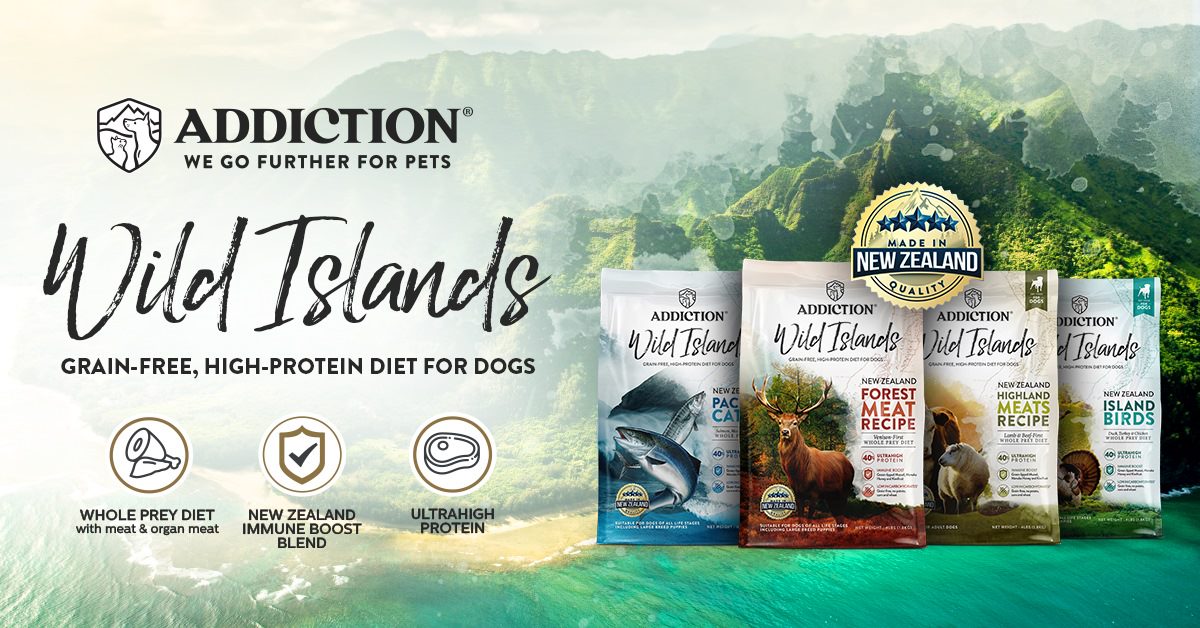All You Need To Know About Cat Food

Food is one of the basic needs of cats. In the past, wild cats hunted prey for their nourishment and sustenance. With domestication, it is now the responsibility of pet owners to provide a nutritionally-balanced diet for their pet cats.
When it comes to food, cats have specific dietary requirements. The choice of pet food depends largely on several important factors including age or life stage, health status, and lifestyle. Cats are obligate carnivores, which means they thrive on a meat-based diet. They depend on the nutrients that are present in meat for their nutritional needs. A natural feline diet includes little or no vegetable matter, although cats have been known to “graze” on grass when they want to get rid of an irritant in their stomach, throat, or esophagus.
There are some essential nutrients that cats are unable to synthesize. These nutrients are necessary for their health and well-being; insufficient intake can eventually lead to the manifestation of deficiency symptoms and failure to thrive. One of these essential nutrients is taurine, a type of amino acid that is available in rich quantities of meat. Eating a meat-based diet will help ensure that pet cats have an adequate intake of taurine and other essential nutrients for use in various physiological processes in the body.
For cat food to be complete, it must have all the basic nutrients such as protein, fats and oils, vitamins, minerals, and water. You may have noticed that carbohydrates are not included in the list. Experts have always reiterated that cats have no known dietary carbohydrate requirement. Cats are also unable to efficiently metabolize carbohydrates. However, they are capable of utilizing protein and fats efficiently as the main sources of energy.

Cat owners should walk the extra mile to meet the nutritional needs of their pets. With so many cat foods that are now available, pet owners should learn to separate the “chaff from the grain”. Making a habit of reading the list of ingredients and learning how to decipher all the important information that is in the product label can help make an educated decision. Knowing your pet’s specific nutritional needs can contribute significantly to their health and well-being.
This section contains a wealth of information about cat food that pet owners should know about.
How To Choose The Right Cat Food?
Choosing the right cat food can be overwhelming, especially for cat parents who have no idea what their pet needs. So many questions come to mind about cat food, from choosing which is better between wet or dry food, to what ingredients must be present in the product, to the best food products to buy.
Understanding your cat’s specific nutritional needs, the types of pet food that are available, and knowing how to decipher product labels can help you choose the best food for your furball.
Cats foods are generally grouped into dry food (kibble), wet (canned), semi-moist, and fresh pet foods. Premium quality pet food is already formulated to contain a nutritionally balanced diet for the lifestage it is made for. When it comes to choosing what type is best for your pet, it is a good idea to familiarize yourself with each group including its pros and cons.
Cat parents should also make a habit of reading pet food labels and learn how to decipher important information that these labels contain. To conform to established regulations regarding pet food labels, the information should include the name of the product, net quantity, name and address of the manufacturer, list of ingredients, guaranteed analysis, nutritional adequacy statement, feeding instructions, and calorie statement.
Certain types of ingredients affect the nutritional content of pet food and decrease its quality. Pet owners should try their best to steer clear of pet food that contains feed-grade ingredients, chemicals and preservatives, artificial food coloring, and rendered.
Read more about how to choose the right food for your pet cat.
6 Superfoods For Your Cat
And did you know that there are also so-called superfoods for cats? Indeed, these foods are nutritionally dense with minimal calories. They are jam-packed with vitamins, minerals, and antioxidants. Most are plant-based, like blueberries, carrots, chia seeds, cranberries, goji berries, and pumpkin. But there are also some species of fish, such as salmon, and dairy products which are also labeled “superfoods”. Solid Gold, is one brand that places high importance on superfoods in their recipes.
Superfoods are primarily indicated to supplement a nutritionally balanced diet to boost various physiological processes of the body including immune system function, digestion, heart heart, etc. Most superfoods are rich in antioxidants which means they may possess anti-cancer and/or anti-inflammatory properties. Cats suffering from bone and joint problems, cognitive dysfunction, and other health issues can possibly benefit from a steady supply of antioxidants. Some superfoods that contain high quantities of essential fatty acids (EFAs) that help promote the function of the immune system and possess anti-inflammatory properties. EFAs also help keep skin and haircoat healthy.
On top of the list of superfoods for cats are blueberries, carrots, chia seeds, cranberries, goji berries, and pumpkin.
How To Store Cat Food
How cat food is stored once it is brought home has an important effect on preserving its freshness and quality. Dry and wet pet food are stored differently because the high water content of wet pet food can significantly shorten its shelf life once it is opened. Canned or wet pet food needs to be refrigerated once the product content is exposed to the elements where freshness is maintained for about 7 days. If you have opened a bigger can of cat food, it is a good idea to wrap the contents in single servings and have them frozen although this can change the taste and texture of the pet food. Unopened canned food should be stored in a cool dry place.
On the other hand, dry food needs to be stored in an airtight container or packaging to avoid exposure to air, heat, moisture, vermin, etc. As much as possible, dry pet food must be stored in its original packaging and re-sealed. The material that is used to make high-quality pet food bags has a fat-barrier and are made to resist the elements. It is not advisable to pour the contents of a dry pet food bag into a metal, glass, or plastic bin because this can hasten deterioration. Pet food bags should be stored in a cool and dry room where the temperature won’t exceed 100°F (38°C).
Know more about the shelf-life of cat food and how storage conditions affect the quality of the products here.
FAQs About Cat Food
Cat food and nutrition is a very broad topic and there is so much to discuss. This section seeks to answer most of the questions that cat parents have about cat food. These questions range from the different types of special diets such as prescription diets, hypoallergenic diets, or holistic diets, choosing between wet food or dry food, nutritional needs of cats suffering from specific health issues such as diabetes mellitus, organic and natural pet foods, diets for hairball prevention, as well as natural or organic diets for cats. The great pet food debate on what is the best diet and pet food for pets never cease. It all boils down to a cat’s preference or whether a health issue requires eating a prescription diet to meet their special needs for specific nutrients. Cats suffering from food allergies can benefit from a hypoallergenic diet after the allergen culprit has been identified. Holistic diets generally contain high quantities of digestible protein, probiotics, and/or essential fatty acids to meet the specific demands of individual cats. There are also prescription diets for diabetic cats which are formulated to contain little or no carbohydrates. There are also grain-free diets that are recommended for diabetic cats which contain potatoes and other carb substitutes instead of grains.
The increasing number of pet food recalls has many pet owners switching to organic and natural pet food. These products don’t contain artificial ingredients that are harmful to pets such as artificial colors, flavors, preservatives, and fillers.
Each lifestage differs in specific nutritional requirements thus there is kitten food, adult maintenance, and senior pet food. Cat parents who take a proactive approach in their pet’s health and well-being can gain a lot of knowledge from these FAQs.
Natural Remedies For Cat Diarrhea
Diarrhea is a common problem among cats. It can be caused by medical or non-medical causes. One important non-medical cause is associated with the animal’s diet. A sudden change in diet can pave the way for digestive upsets such as diarrhea and vomiting. The need for a gradual transition from the old to the new pet food cannot be overemphasized. The transition period (about 10-15 days) will give enough time for the gastrointestinal tract to get used to the components of the new diet.
Diarrhea can also be an important symptom of food allergies or food intolerance. Take note that these two are different conditions. Food intolerance is just an immediate localized adverse reaction to food. On the other hand, food allergies involve the animal’s immune system in which exposure to specific ingredients in pet food (allergen) causes the immune system to go into overdrive, leading to the manifestation of symptoms of food allergy such as itching and diarrhea.
While diarrhea in some cats resolves on their own without any medication, there are instances when it can become a life-threatening condition. Pet parents must be able to determine if their cat needs prompt veterinary attention such as diarrhea in cats suffering from underlying health issues, kittens, and senior pets, when the cat is manifesting other signs of illness, blood-tinged stool, and frequent, profuse, or watery diarrhea. Severe diarrhea can pave the way for dehydration and electrolyte imbalance.
In mild cases of diarrhea, natural home remedies can be administered to alleviate symptoms. These include making gradual dietary changes, increasing or decreasing fiber in the diet, dividing the cat’s daily ration into several smaller meals, probiotics, and adding electrolytes to water.
Read: Natural Remedies For Cat Diarrhea








